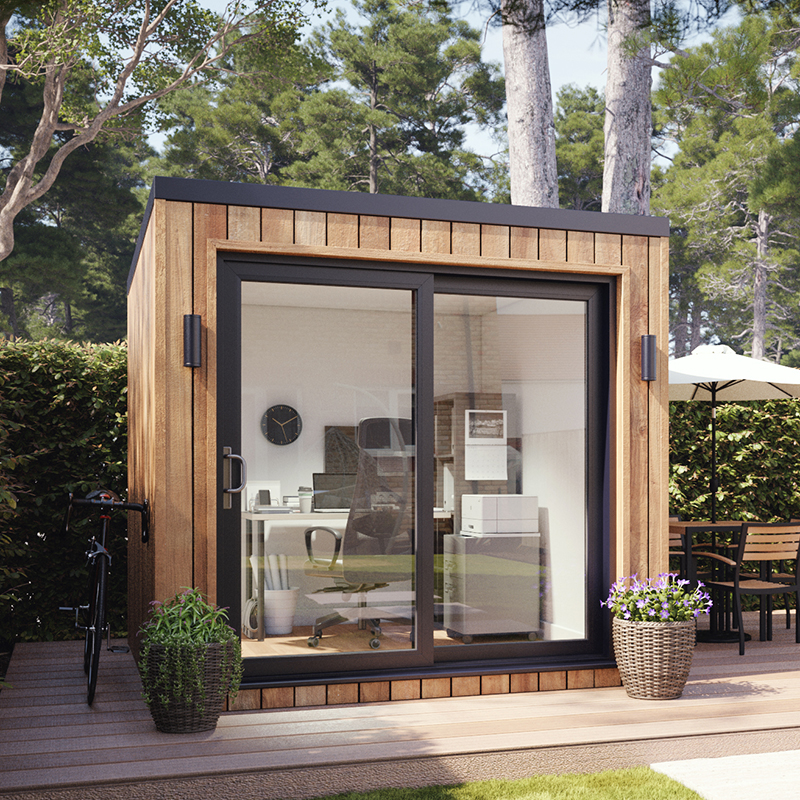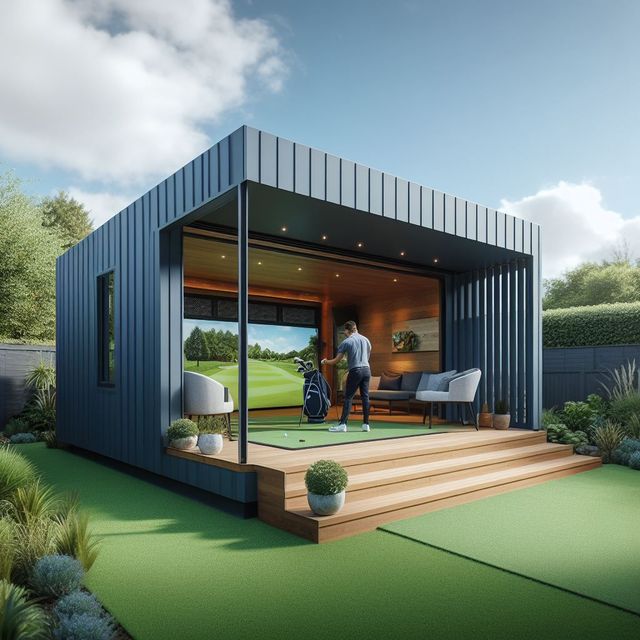Excellent Info On Planning Permission On Garden Rooms
Wiki Article
What Planning Permission Is Required For Garden Rooms As Well As Other Structures?
When considering the construction of garden rooms or conservatories, outhouses extension or garden offices certain size limitations usually determine whether you require planning permission. Here are the size criteria that may require you to obtain planning permission.
Planning permission is normally required for detached outbuildings in the event that its total area including any existing outbuildings and the surrounding area house more than 50%.
Height restrictions
Single-story buildings. The maximum eaves cannot exceed 2.5 meters.
Buildings less than 2 meters away from the property's boundary must not exceed 2.5 meters in size.
Floor Area:
Even the planning approval isn't required, structures with a greater floor area of 30 square meter may need to be approved according to the building regulations.
Proximity of boundaries:
If the structure is located within 2 meters of an area boundary, it's usually required to apply for planning permission if the structure's height is more than 2.5 meters.
Building Use
The size of gardens isn't the only factor the purpose of their use could affect whether planning approval is required. For instance, if the building is to be used for residential accommodation or as a commercial space Planning permission will be more likely to be needed.
Permitted Development Rights:
Permitted Development Rights permit development rights that allow certain types of works without a full planning request and have size and condition restrictions. These rights differ based on whether the property is in a conservation area or subject to other restrictions.
Conservatories and extensions:
In general the case of a single-story extension at the rear of a detached property, maximum depth is 4 metres and for semi-detached or terraced homes it's 3 meters. This can be increased by 8 meters for detached houses and by 6 feet for semi-detached and terraced houses, based on the circumstances.
The height of an uni-story rear extension is not more than 4 metres.
Side Extensions
The maximum height for an extension on the side shouldn't exceed 4 meters.
Volume Restrictions
Permission for planning may be required in specific zones, like conservation zones or Areas of Outstanding Natural Beauty. Any new construction which increases the volume of the existing home by more than 10% (or 50 cubic meters) or the larger of the two numbers (whichever is greater) requires planning approval.
Front Extensions
Planning permission is required for extensions that extend beyond the front of the house.
It is advisable to consult the local planning authority to confirm any rules, as they could differ based on the local authority and the specific requirements of your property. Building regulations approval could be required even if planning consent is not needed. This could be for safety or structural reasons. Read the top garden outhouses for blog info including outhouse builders, outhouse garden, Tring garden rooms, garden office electrics, garden rooms, garden rooms in St Albans, outhouse garden rooms, Tring garden rooms, copyright garden buildings, garden room planning permission and more.

What Planning Permits Are Required For Garden Rooms, Etc. With Regard To Environmental Impact?
The environmental impact of building gardens, conservatories, garden rooms or outhouses, as well as garden offices and extensions can significantly impact the need for an application for a permit to plan. Here are the most important environmental considerations Biodiversity
If the proposed structure is likely to impact the habitat of wildlife in the area, such as hedgerows, trees, or ponds, the planning permit is required. In order to minimize and assess the impact, an eco-survey may be required.
Habitats and species that are protected
Planning permission is required when the site is home to endangered species (e.g. bats or newts) or is situated within or near habitats of special scientific interest (e.g. Sites of Special Scientific Interest: SSSI). Particular measures must be implemented to protect them.
Preservation Orders for Trees Preservation Orders
Permission is required for removal or alter the trees protected by TPOs. The local council will be able to assess the impact, and may require that replacement plantings be constructed or any other mitigation measures.
Flood Risk and Water Management
Planning permission is required for any development that is located near the shoreline or in flood-prone areas. An assessment of flood risk (FRA) may be required to ensure the structure is able to drain and doesn't increase flood risks.
Sustainable Construction Practices
It is possible to get planning permission in order to utilize sustainable construction materials and practices. Be aware of energy efficiency as well as insulation and carbon footprint.
Surface water runoff and Drainage
The impact of the construction on drainage and surface water runoff is an important environmental aspect. The permission to plan will guarantee that the drainage system is in place and prevents flooding or waterlogging.
Soil Stability and Soil
If the construction is likely to affect soil quality or stability of the land the need for planning permission. This could include issues such as subsidence or erosion of the soil, in particular on sloped areas.
Air Quality
Planning permits are required for developments near industrial zones or major highways that could affect the local air quality. This will ensure that air pollution is within acceptable levels, and mitigation strategies are implemented.
Noise Pollution:
If the proposed use of the extension or garden room will likely to cause substantial noise (e.g. an office or music studio) the planning approval is required. The local council must evaluate the level of noise and its potential impact on neighbors and environmental impact.
Waste Management:
Effective waste management throughout and post-construction is crucial. Planning permission ensures that the construction site has recycling facilities and waste disposal in order to reduce the environmental impact.
Energy Efficiency
The planning permission may include energy efficiency demands, like the use of solar panels, high-efficiency glazing or green technologies. This helps reduce the environmental footprint.
Environmental Regulations
Environmental regulations at both the national and local level include the UK Environmental Protection Act. Planning approval assures that all regulations are met in addition to the development being environmentally sustainable.
Permissions to design garden rooms or conservatories, as well as outhouses, office structures, and garden offices should take into account a variety of environmental factors. To ensure that the project that is proposed is environmentally sustainable it is essential to seek out local planning authorities prior to the planning stage as you can. View the top 5m room for site advice including garden room permitted development, outhouse buildings, garden rooms near me, garden room, Tring garden rooms, garden rooms near me, ground screws vs concrete base, garden room planning permission, small garden office, what size garden room without planning permission and more.

What Planning Permission Do You Require For Garden Rooms And So On.?
When deciding if you want to apply for permission to designate garden rooms, conservatories and outhouses and also extensions or gardens it is essential to think about the style of the structure. Here are the main considerations:
Planning permission is not required when you can build the structure within the allowed development rights on your property. There are, however, specific design and look criteria that must meet.
Size and Scale
The scale and size of the new building should be in line with the structure in place and structures that surround it. Buildings that are bigger than the restrictions set forth in permitted developments rights require planning permission.
Height and Mass:
The height, massing and dimensions of a new structure must be compatible with the property surrounding it and existing buildings. Planning permits are often required for structures that go over the height limits or are incompatible with the area.
Materials and Finishes:
The selection of materials and finishings should match existing buildings and structures within them. It may be necessary to obtain planning approval if materials used are not in keeping with the character and appearance of the area.
Design Harmony:
The design of a new structure should match the style and appearance of the house or other structures surrounding it. The style of the new structure should be in harmony with local features and aesthetics.
Roof Design
The roof's design must match the design of the adjacent property and buildings. It may be necessary to get permission to plan if the proposed roofing design does not fit in with the local character or design.
Fenestration is the term used to describe windows and doors.
The style, location and dimensions of windows and doors have to be in harmony with the existing home and any surrounding structures. The proposed fenestration could need planning approval if it is not compatible with the local character and look.
Facade Treatment
The treatment of the facade must blend in with the surrounding property and existing structures. The proposed facade might require approval from the planning department if it's not in keeping with the surrounding buildings.
Landscaping, Surroundings and Environments
The landscaping around the new structure should complement the existing property and surrounding structures. If the landscaping doesn't match the local look and style Planning permission may be needed.
Visual Impact:
The visual impact on the surroundings of the new building should be minimized to the minimal level. Planning permission may be needed if the proposed structure has negative visual effects on the area.
Heritage and Conservation Areas
If your property is situated in the conservation or heritage zone There may be more stringent standards for design and appearance. Any construction that doesn't meet these criteria may require approval for planning.
Guidelines for Architectural and Planning:
Local planning authorities typically have guidelines for design and appearance that need to be followed. Planning permission might be needed if the proposed building does not conform to these guidelines.
Planning permission is often based on the design and appearance of the structure. This is the case for gardens, conservatories and outhouses. It is essential to speak with your local authority for planning at an early stage of the planning process to make sure that you are following local guidelines for character and appearance and decide if planning permission is required. Have a look at the top rated better ground for blog advice including what size garden room without planning permission uk, myouthouse, insulated garden buildings, copyright outhouse, garden rooms, gym outhouse, outhouse, conservatories and garden rooms, what is a garden room, outhouse building and more.
